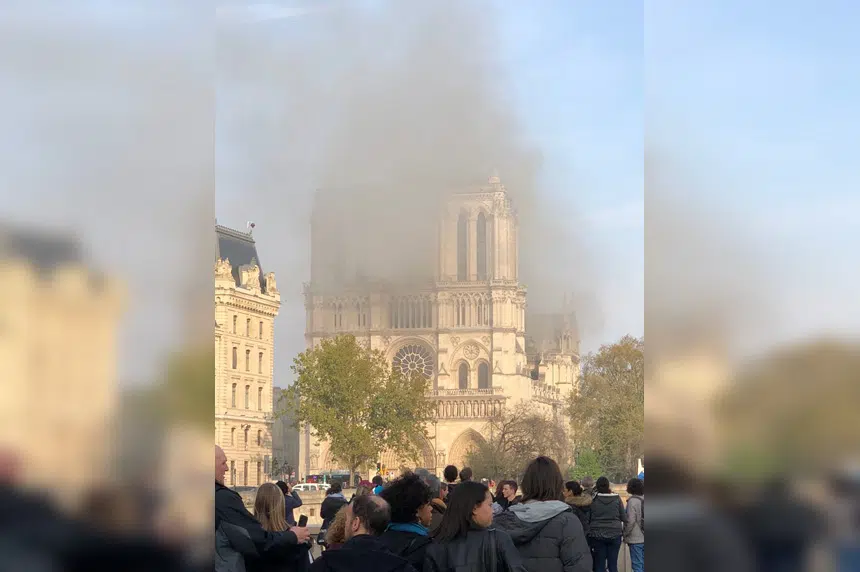The sights coming out of Paris have had a profound impact on millions of people glued to their screens, watching the Notre Dame Cathedral burn into the evening.
Shock and devastation aptly described how Mark Hagemoen, the Catholic Bishop with the Diocese of Saskatoon, felt after seeing the 856-year-old building go up in flames.
“It’s unbelievable,” he said. “It’s amazing that a place with such solidity, and that has been around for hundreds of years is being devastated so quickly.”
The timing of the fire is of great significance to Catholic worshipers as many are observing Holy Week, the week preceding Easter.
“A lot of people are looking on, including here in Saskatoon, with horror and (are) just stunned.”
Hagemoen has visited the cathedral on two occasions, and will never forget that feeling of touring it for the first time.
“That kind of medieval architecture was one that focused on pulling the viewer, as he or she came into the church, to a sense of the holiness and transcendence of God,” Hagemoen said. “When you came in, you were drawn forward and up in a magnificent way.”
Bernard Flaman is a conservation architect in Saskatchewan and thinks that Gothic-style architecture does a lot more than humble the millions that pass through Notre Dame Cathedral every year.
“The goal was to build something that would put you in a state of awe, and to build something very tall.”
One of the most widely viewed images or videos today was the moment the massive spire stretching high above the rest of the cathedral came crashing down due to the immense heat.
Flaman said the central spire and the roof of the structure were made from timber.
“That’s what we see burning today… the question will be, ‘Will the stonework survive?'”
Being one of the world’s top tourist attraction has led to many different rehabilitative projects since the cathedral was first considered complete in 1345. While Notre Dame survived historic events like the French Revolution, other churches in the area did not and had to be restored.
“It was after Victor Hugo’s novel — The Hunchback of Notre Dame — there was more popular interest in the cathedral, and it spurred on some of the restoration work,” Flaman said. “It was kind of a forerunner to some of the heritage conservation practices we pursue today.”
There is no information on exactly what has been destroyed or what has been salvaged from the building yet, but both Hagemoen and Flaman agree that any losses will be felt across the world.
“By virtue of its size and its ornateness, it certainly was an experience both of faith and culture,” Hagemoen said.
— With files from 650 CKOM’s Chris Carr and Keenan Sorokan.











